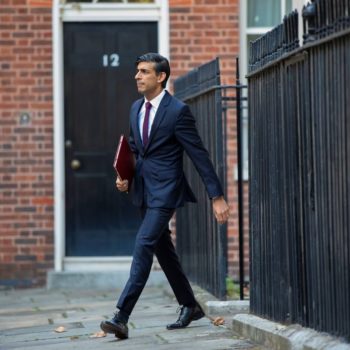At the end of June the European Commission presented its reflection paper on the Future of EU Finances. This is the final paper in a series of six launched by the EU institution throughout the first half of 2017 as part of broader reflection on the Future of Europe. Climate change and energy are listed as top priorities for the European Union in the coming years, but there is still uncertainty on whether Europe will be able to deliver in these key policy areas.
The European Union has entered a period of reflection on what the future will look like after Brexit with numerous challenges ahead and the 60th anniversary of the Treaty of Rome, which set the ground for European integration as we know it. The European Commission presented its White Paper on the Future of Europe in March 2017, outlining different scenarios where the EU could lead. Scenarios include:

Each scenario entails a redefinition of the European Union’s essence, but also of its future aspirations. This background paper was later complemented with papers on the social dimension of Europe, how to harness globalisation, deepening the Economic and Monetary Union, the future of European Defence and, finally, the future of EU finances.
The last piece of this reflection process looks at the budgetary implications of the five scenarios. In all five, the European Commission has identified sustainability as a pillar for future EU finances -along with competitiveness, solidarity and security. In fact, even in scenarios considering a drastic reduction of EU scope and funds, climate change and energy are considered as a priority. One of the main reasons is the overarching principle of European added value that the European Commission wants to uphold: every euro spent in the EU budget must bring additional value. Policy areas at the EU level such as climate and energy are considered an example of this added value as well as an opportunity for the EU to increase its own resources through environmental taxation, carbon pricing or emission premia for cars. Finally, the text hints at opening the debate on linking allocation EU funds to bolder climate action.
The future looks good on paper, but much less rosy in reality. For example, cross-border energy projects under the Connecting Europe Facility programme are cited as examples of real European value added. The truth is this programme has been overspending in fossil fuel infrastructure due to misguided gas demand estimates. The reflection paper on the Future of EU Finances calls for “stronger coordination between external and internal policies… including the implementation of the Sustainable Development Goals (SDGs) of the UN 2030 Agenda and the Paris Agreement.” However, the EU is struggling to set up a climate and energy framework for 2030. Moreover, the current framework, if fully implemented, would still render the Union lagging behind in the decarbonisation roadmap set down in the Paris Agreement.
There are two important steps the EU must take if it is serious about starting to turn tables and make best use of European added value. First, the EU institutions must show their commitment to an affordable, inclusive clean energy transition by finalising the legislative process for the proposals in the Clean Energy Package in a comprehensive, coherent manner. Second, the negotiations for the future Multiannual Financial Framework (MFF) post-2020 must bear in mind that all challenges linked to the transition to a low-carbon economy need robust financial support.
The EU is in a good position to cement an inclusive and fair energy transition and has great potential to protect European industry and citizens against climate risks. Progress must be made in both the Clean Energy Package and the MFF post-2020, to put the low-carbon transition at the forefront of Europe. Even better if complementarities between the two can be explored. The future is now, it is time to act and start shaping the EU’s tomorrow today.


